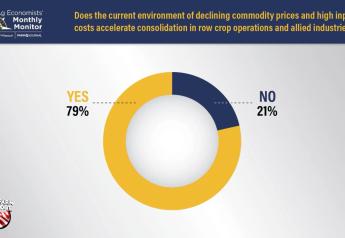All Rectangles Are Not Squares

The following commentary does not necessarily reflect the views of AgWeb or Farm Journal. The opinions expressed below are the author's own.
Maybe it’s because we’ve been immersed in news of mergers and acquisitions, partnerships and joint ventures, but not everything should be grouped together.
Case in point, I was at a recent conference, and the topic of e-commerce for ag inputs was discussed. No doubt, 2018 is a pivotal year for ag input sales online, and here are some of our recent stories:
- Online Ag Retail May Gain Momentum For A Pivotal Year
- CommoditAg Adds MKC As Retailer Partner
- AgVend Raises $1.75 Million And Will Double Retailer Footprint
- Ecommerce Site Launches With Adjuvants
- AgPro Podcast: FBN Tools Built To Leverage Technology
At this previously mentioned conference as participants went back and forth, it seemed as if all agricultural inputs were being lumped together. For one, not all retailers sell seed, crop fertility products, crop protection products and other inputs. Much less, not all ag retail businesses provide services for application, scouting, precision ag and other related work.
The same is true with farmers. Not all farmers are the same. The industry is not a homogeneous group where every farmer makes decisions in the same way.
The above statements may be obvious to you. I hope they are. But for many who are just outside of agriculture, generalizations may drive their impressions of ag businesses and the people of the industry.
Just more than five dozen people were the difference in a major vote. That is the story behind a ban of aerial application in Lincoln County, Ore. The issue is now being fought in the courts. But I keep thinking about how 61 people meant a majority for a initiative that has immense impact on the local forestry industry. What was even more impressive to me in reporting on this is that professional helicopter applicators are accurate within 12" when applying a pesticide that is already regulated and applied at most two times in a 40-year cycle. This is just one example of how the kind of generalized idea that “all pesticides are bad” could spread to affect an entire industry.
Perhaps we should all be a little more obvious about what we do and why we do it. At the end of the day, there’s a reason why we do what we do. And I hope at the end of the day you feel you’ve done your job well.







